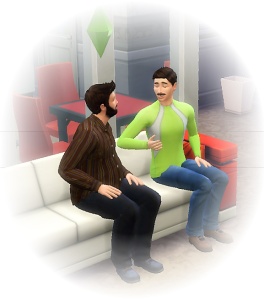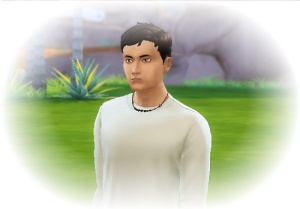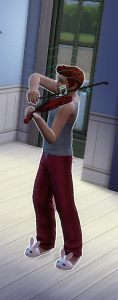READ PART 1 HERE
READ PART 2 HERE
READ PART 3 HERE
READ PART 4 HERE
READ PART 5 HERE
Over the last few weeks, we’ve talked about many different components that go into a strong scene. Today, I’m going to wrap this series up with a few ideas on how we can use these element. I’ll show how we can put them together to create powerful scenes in our stories.
Putting a Scene Together
It all starts with conflict. That’s the key element in every scene. It’s the reason the scene exists in the first place, so it makes sense to build our scenes around it. When you sit down and plan a scene, start by identifying the central conflict that’s going to occur.

To illustrate, I’ve pulled a short scene out from one of my novels, Summertime. The story — set in 1914 — is about Linn Sparks, a young woman from a small town in Kansas who’s become a stage star in San Francisco. For personal reasons, she’s come back to Brookfield, her home town, for a few days. She hates the town and everything in it.
The scene I’m sharing takes place early in the story, shortly after Linn arrives in town. Her underlying need is acceptance, although she doesn’t fully understand that. Her goal is to conduct her business and return to San Francisco as quickly as possible. In this scene — as with others in the story — Linn is intent on showing herself as superior to the “simple folks” in Brookfield.
As the scene begins, she’s rented a wagon and is driving toward her parents’ farm.
In planning the scene, I’m going to start by looking at the conflict that will happen. This conflict comes when the scene question is answered.
Here, the scene question is “Will Linn reach her parents’ farm without problem?” The answer is “No, and she’s going to have a disagreeable encounter with a former friend, Polly Washburn.” This forms the central conflict of the scene.
Here’s the point at which the encounter happens:
“Why, Linnie Mae Sparks! Is that really you?”
This is the central conflict, a sudden change that disrupts Linn’s intentions. It’s a single line of dialogue that upsets Linn for a lot of reasons, although I don’t spell them all out. In reading the complete scene in the novel’s context, readers can understand Linn’s feelings.
Next, we want to consider any warning signs that occur. These are slight changes in a scene that alert our main character — and the reader — that something is about to happen. Maybe your character sees a man approach. Maybe there’s a knock on the door. Maybe there’s a flash of lightning and a rumble of thunder just before rain begins to fall.
In my scene, Polly’s appearance takes Linn by surprise, so instead of a warning, I kept Linn busy tending to another problem. She’s having a bit of an argument with a stubborn mule. I show that something is about to change by abruptly breaking off Linn’s dialogue with the critter.
“Now, listen, you stubborn old thing, I’ve got a notion to send you to the glue pits if you—”
Now, we’ve identified the central conflict and change in the scene, and we know how we’ll prepare the reader. Next we need to consider how our point-of-view character will react. When things happen, there’s an immediate response.
In my scene, Linn whirls around to face her former friend. Here’s the reaction I wrote for her:
At the sound of the squealing voice, Linn let go of the mule and whirled around.
We’ve now taken three big steps toward creating a satisfying scene:
- We’ve alerted the reader that something is about to happen.
- We’ve introduced a source of conflict and change.
- We’ve shown our character’s immediate reaction.
Basically, we’ve written the middle of our scene. But scenes have beginnings and endings, too. So, before we get too far ahead of ourselves, it’s a good idea to consider when, where, and how our scene will begin.
Generally, we open a new scene with a quick “status” — showing who’s there, where they are, and essentially “setting the stage” for the reader. Here’s the way I opened the scene with Linn and Polly:
A short time later, she climbed aboard a rented wagon, lifted the reins in her hands, and slapped them over the mule’s broad back.
That’s the beginning. What about the ending? Just when and how should a scene end? Scenes come to an end when they’ve served their purpose. I had several reasons for writing this particular scene. I needed to introduce Polly to the story, show Linn’s negative attitude toward the people of Brookfield, and, in general, make Linn as uncomfortable as I could. Once I’d accomplished those goals, it was time to end the scene with Linn driving away:
Looking straight ahead, she took hold of the thick leather reins. The old mule must have sensed Linn’s desire to move on. The wagon lurched forward.
In between the beginning and the end, a lot of things can happen within a scene — in addition to the central conflict in the middle. Usually, there’s a specific action — often a line of dialogue — that “brings the scene to life”. I think of it as the point where a director might yell, “Action!” while making a film.
The scene with Linn begins with her slapping the reins over the mule’s back. To bring it more fully to life, I also gave her a few words to speak:
“Go on, there! Get up!”
Before we go on, let’s make a little map of the scene structure so far:
- We’ve set the stage for the reader.
- We’ve brought the scene to life.
- As we approach the middle of the scene, we’ve alerted the reader that something will happen.
- We’ve introduced conflict and answered the scene question.
- We’ve shown our character’s immediate reaction.
- We’ve marked the point where the scene will end.
There’s still a bit missing though.
As we progress through a scene, characters move about. We introduce new characters. From time to time, we also need to share our POV character’s thoughts and feelings. In the early part of a scene, especially, we need to provide any information the reader needs in order to understand what’s happening. This information can also provide description and characterization. It may also introduce other elements of conflict.
In writing this scene, remember, I wanted to make Linn as uncomfortable as possible. So, I added that very stubborn mule, and worked in a little backstory information about her and her glamorous life in San Francisco.
Had she forgotten how to handle a buckboard? She hadn’t driven one in years. In San Francisco, she paid a kindly older gentleman to transport her about town in a fine, open carriage.
Later in the scene, when Polly appears, I needed to give her a proper introduction and quick description:
Like Brookfield itself, Polly had not changed an iota. Well, maybe she looked a trifle older, and maybe she’d added a few pounds to her skinny frame, but she still wore her mousy-brown hair in that loose bun at the back of her neck, and she still dressed in those simple shirt-waisted frocks. Although she and Polly had once been the best of friends, with one look, Linn knew the two of them no longer had anything in common. No doubt Polly was married now, probably had a houseful of noisy children, and spent her days cooking, cleaning and tending to farm chores.
Working in backstory, descriptive information, and internal elements is an important aspect of scene-writing, but next to the central conflict, the most important consideration is what the character decides or does as a result of the conflict. Scenes are built on cause-and-effect relationships. Here, Polly’s appearance causes Linn to take action. This is a critical point in a scene because this decision or action moves the story forward.
Here’s how I presented this point in Linn’s scene:
“Sorry, but I’m in a bit of a rush right now.” She gave Polly a little wave, waggling her fingers in that affected manner she’d adopted since being on stage. With a swish of her long skirts, Linn climbed aboard the wagon again.
So far, you’ve only read the scene in a very jumbled up version as I’ve highlighted different scene elements. When you read the complete scene, you’ll notice places where I’ve “filled in” additional bits of information to create a smooth, continuous flow from one element to the next.
In writing a scene, I like to keep this little checklist in mind. It’s the same structure I listed before with a few more points added:
- Status – setting the stage for the reader
- Action – bringing the scene to life
- Function – providing information the reader might need
- Warning – alerting the reader that change and conflict is coming
- Central conflict – answering the scene question
- Reaction – showing the character’s immediate response
- Effect – showing how the change will affect the character
- Response – presenting the character’s decision or action
- Ending – closing the scene and preparing to move on
Now, I’ll share the completed scene.
A short time later, she climbed aboard a rented wagon, lifted the reins in her hands, and slapped them over the mule’s broad back.
Nothing happened.
Had she forgotten how to handle a buckboard? She hadn’t driven one in years. In San Francisco, she paid a kindly older gentleman to transport her about town in a fine, open carriage.
“Go on, there! Get up!” Linn flicked the reins again, her frustration mounting. Silently, she willed the stubborn animal to pick up its feet and move. When the mule finally took a few steps, Linn let out a breath.
But the obstinate creature made it only a scant twenty yards before stopping once again.
“I swear…” Linn groaned and threw down the reins. If all else fails, Linnie, give the critter a piece of your mind. Recalling the advice her father had once given, she jumped from the wagon, landing with a slight thud on the dusty street. Glancing down to her calfskin boots, she frowned at the dirt and scuffs. She’d be an absolute wreck by the time she got away from this Godforsaken town. She marched around and grabbed hold of the mule’s halter and gave it a good tug.
“Now, listen, you stubborn old thing, I’ve got a notion to send you to the glue pits if you—”
“Why, Linnie Mae Sparks! Is that really you?”
At the sound of the squealing voice, Linn let go of the mule and whirled around. As she’d done with Joe Trumbull, she quickly put her most professional smile upon her face. Always show a smile, she’d learned. It put people at ease, drew them in, and needless to say, it resulted in more ticket sales.
Only that was in San Francisco.
This was Brookfield.
No theater. No ticket sales. And no need for any superficial smiles.
She frowned at the mule again. “It’s Polly Washburn,” she muttered under her breath. Linn turned back as the young woman hurried across the street.
Like Brookfield itself, Polly had not changed an iota. Well, maybe she looked a trifle older, and maybe she’d added a few pounds to her skinny frame, but she still wore her mousy-brown hair in that loose bun at the back of her neck, and she still dressed in those simple shirt-waisted frocks. Although she and Polly had once been the best of friends, with one look, Linn knew the two of them no longer had anything in common. No doubt Polly was married now, probably had a houseful of noisy children, and spent her days cooking, cleaning and tending to farm chores. Linn shuddered at the thought.
Who was it Polly had mooned over back in high school? Billy McGregor? One of the Loonsfoot boys? It didn’t matter, and Linn didn’t care to waste any time finding out.
“Sorry, but I’m in a bit of a rush right now.” She gave Polly a little wave, waggling her fingers in that affected manner she’d adopted since being on stage. With a swish of her long skirts, Linn climbed aboard the wagon again. Looking straight ahead, she took hold of the thick leather reins. The old mule must have sensed Linn’s desire to move on. The wagon lurched forward.
Although this isn’t a long scene — barely over 500 words — it serves a definite purpose in the story. I hope by reviewing it here, you can see how I used the different elements of scene structure to put it together.
The scene structure list I shared above has become a useful guide for me in fiction-writing. By understanding the elements and how they work together, we can build scenes that accomplish our goals as storytellers.
I hope you’ve enjoyed this “Making a Scene” series. There’s much more that could be said about scene-writing. Understanding the essential elements will help you discover new ideas to use in your own stories.
Remember, every scene is different. You’re the author, so always trust your own judgments.
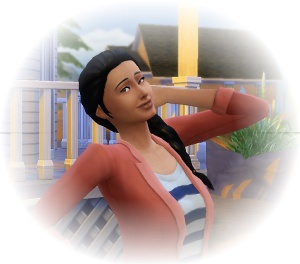 Sara Foster Evans considers herself one of the luckiest women in the world. Her life couldn’t be more perfect, in her opinion. She met the love of her life was she was a young woman of 22, married him two years later, and together they raised two sons who have gone on to be successful, responsible young men.
Sara Foster Evans considers herself one of the luckiest women in the world. Her life couldn’t be more perfect, in her opinion. She met the love of her life was she was a young woman of 22, married him two years later, and together they raised two sons who have gone on to be successful, responsible young men.
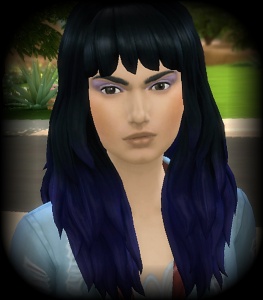 Corrine Edwards
Corrine Edwards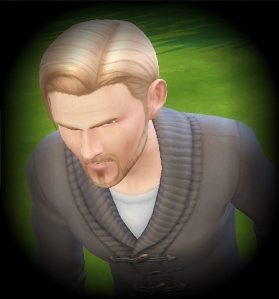 Allen Jensen
Allen Jensen

